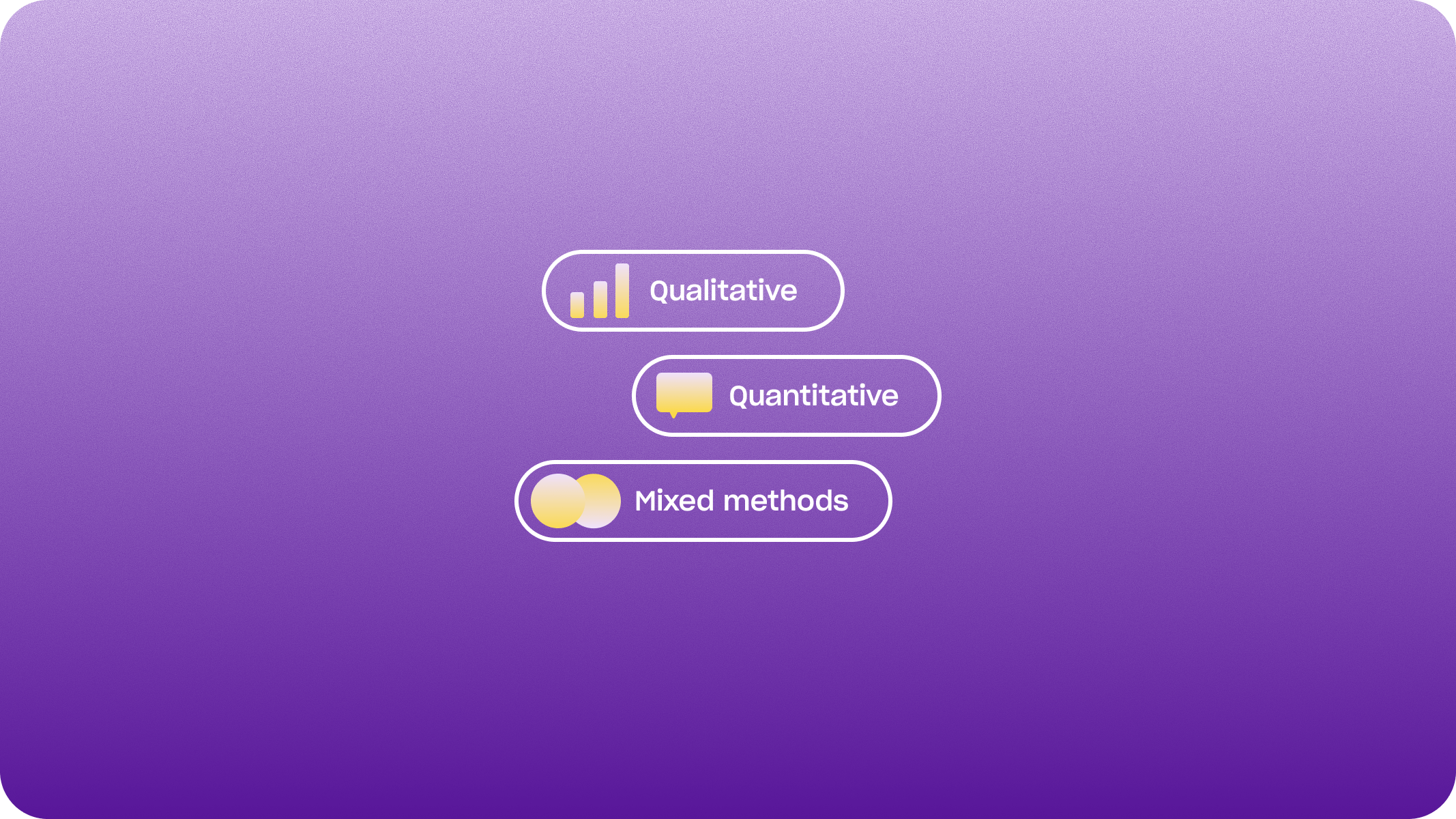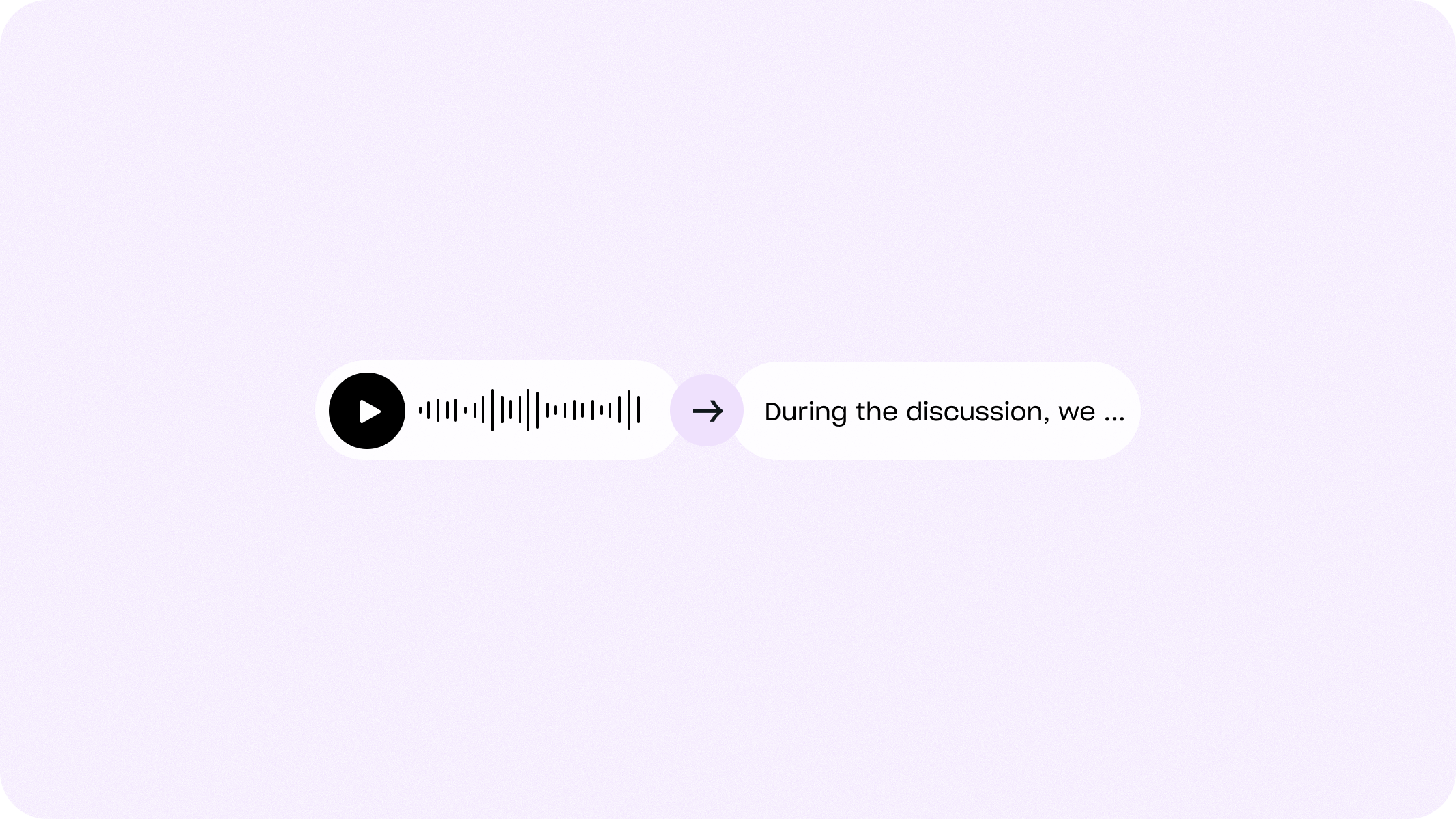What is transcription in research? Everything you need to know

Summary
- Transcription turns recorded interviews, focus groups, or observations into written text for research analysis.
- It’s essential for accuracy, accessibility, and time-saving in qualitative and quantitative studies.
- Transcribed data makes it easier to identify patterns, themes, and insights.
- Fields like academia, healthcare, law, and market research all rely on transcription.
- Good Tape offers secure, fast, and GDPR-compliant transcription perfect for academic and research use.
Have you ever wondered how a straightforward discussion might lead to ground-breaking discoveries? In these scenarios, transcription for qualitative research plays a pivotal role. Transcription carefully captures every word of these conversations, turning spoken ideas into valuable data for future discoveries. Transcription in research is often overlooked but is essential to qualitative research. It builds a link between common conversations and important scientific discoveries preserving every spoken detail for in-depth analysis and insight.
So what is transcription in research? It involves paying close attention to recorded speech and precisely translating them into written language. It offers a written record, which is essential for reliability and validity in qualitative research.
Transcribing is more important than ever in removing challenges to accessibility and language in an increasingly globalised society. Let’s delve more into the details to understand academic data transcription in more detail.
What is transcription in research and why is it important?
The act of turning spoken language from audio or video recordings such as focus groups and interviews into written text is known as academic data transcription in research. Recognizing the variations of spoken language is essential in qualitative research, which makes this task important.
The importance of transcription in research can be highlighted through several key points:
- Accuracy and reliability: Transcription ensures that researchers have an accurate and reliable record of spoken communication, which is essential for quality data analysis.
- Detailed analysis: Researchers can get deeper insights by carefully reviewing spoken words, including linguistic variations and non-verbal clues, through the use of written transcripts.
- Enhanced accessibility: Research findings are more accessible when transcribed material is shared and obtained more readily, especially for people who prefer reading over listening or have hearing difficulties.
- Time efficiency: Researchers can save significant time while examining and interpreting their findings by using academic data transcription to help with the effective organising and retrieval of data.
Transcribing allows researchers to look deeper into the complex nature of human interaction and communication. It is not only a tool; rather, it has now become an essential component of the research process.
Transcription for qualitative research plays an important role in bringing spoken words to life. Let’s have a look at what research in a qualitative context entails.
Transcription in qualitative research
Researchers often gather data through qualitative interviews, focus groups, and observations as different research methods, which are typically recorded in audio or video formats. These recordings are converted into written text through transcription, giving the researchers a physical and measurable layout to analyse.
Once transcribed, the textual data becomes a rich resource for qualitative analysis. Researchers engage in coding, where they identify patterns, themes, and categories within the transcripts. This kind of thorough analysis is made possible by transcription, which enables the discovery of deeper interpretations and concepts that could be overlooked in a straightforward audio replay.
Transcription researchers actually trust
Transform your workflow
Transcription in various research fields
Although the process of transcribing spoken words into written text may appear simple, it has an important impact on a variety of areas, each of which depends uniquely on this technique. Let’s take a quick look at some of the areas where transcription is not only helpful but also crucial:
- Medical and healthcare research: Here, transcription turns doctor’s notes and patient narratives into thorough documents that are essential for case studies and the growth of clinical research.
- Social sciences: By documenting the extensive network of social interactions and human behaviour, it transforms focus groups and interviews into data that can be analyzed to provide sociological insights.
- Market research: Transcription helps interpret consumer language and preferences from focus groups and interviews, shaping marketing strategies and product developments.
- Legal research: It ensures accuracy and fairness in legal analysis and decision-making by providing complete records of court cases, interviews, and depositions.
- Educational research: Academic transcription helps in understanding learning processes and educational methods through recorded lectures, student interviews, and group discussions.
Transcription is more than simply words on a paper in each of these and many other areas; it’s a key that opens doors to greater knowledge and insight.
Benefits of transcription in research
Transcription in research is more than just converting speech to text; it’s a transformative tool that offers a wide array of benefits. These benefits improve the research process by increasing the accessibility, accuracy, and ease of analysis of data. Here’s a closer look at some of the key benefits:
Enhanced data analysis
A written document of spoken words helps with in-depth data analysis. Researchers can closely study the discourse in written form, pick up on minute details, and spot themes or patterns that might not be obvious in audio format.
Improved accuracy
This is especially crucial in professions like law or medicine, where little variations in language can have major consequences. By lowering the possibility of error or omission, transcription offers a solid foundation for study findings.
Time saving
In the long run, transcription of recordings can save scholars a great deal of time. Researchers can swiftly reference the transcribed text instead of listening to audio recordings repeatedly in order to uncover relevant information.
Ease of accessibility
Research has become more accessible as a result of transcription. Textual conversion of audio makes the content accessible to a larger audience, including people with hearing impairments.
How to transcribe interviews
The first step in qualitative research is interview transcription, which produces a written account of spoken conversations. Transcribing can be done manually or with the use of tools and software. While the manual method requires a significant amount of time and work, employing tools for the task enables you to quickly access the transcribed material. There are many benefits of transcription, however, a crucial step is to ensure the accuracy, which is better achieved through automated transcription services..
The procedure is carried out automatically using transcription software and tools, which greatly cuts down on the time and effort required. However, selecting the appropriate transcription software is essential for a number of reasons, particularly when doing research where efficiency and accuracy are critical.
Choosing the right transcription service
Transcribing spoken words into written text is a simple operation in and of itself, but the tools used to accomplish this may have a big impact on the effectiveness, success, and final product of a research endeavour. The transcription of audio should be accurate and this is more easily achieved if the service provided is using artificial intelligence. Here’s what you should be looking at when choosing a transcription service for your research.
- Transcription accuracy: The accuracy with which software can transcribe audio varies, especially when it comes to managing a wide range of accents, speech patterns, and technical terminology. To guarantee the correctness of your study results, you must use a tool that offers great precision. Certain tools are able to provide verbatim transcripts which include even the non-verbal cues.
- Time efficiency: Using AI transcription tools such as Good Tape can cut down on the amount of time needed to transcribe. Researchers can proceed to the analysis step more quickly if a technology can do accurate transcriptions of their text more quickly and efficiently.
- Ease of usage: Usability and simplicity of usage are crucial. You may concentrate more on your study by saving time and lowering the learning curve with an automatic and simple-to-use tool.
- Cost-Effectiveness: The cost of transcription software varies. Cost constraints must be balanced with the requirement for a dependable and effective tool, particularly in longer or extensive research plans.
The quality of your research attempt as a whole, the standard of your data, and the effectiveness of your workflow may all be greatly impacted by the transcribing software you use, so make sure you choose the one which works best for you.
Trusted by professionals and teams
Want to read more?
Check out these related resources
Help center (FAQ)
What is transcription in research?
Transcription in research means converting recorded interviews, focus groups, or observations into written text. It provides a reliable and accurate record that researchers can analyze.
Why is transcription important for research?
It improves accuracy, saves time, ensures data reliability, and allows researchers to identify patterns, themes, and insights that might be missed in audio form.
How does transcription support qualitative research?
By turning spoken words into text, researchers can perform coding, thematic analysis, and comparisons between responses more easily and systematically.
Is Good Tape free to use?
Yes. Good Tape offers a free plan so anyone can start transcribing without a credit card.
Why should I use Good Tape?
It’s built for accuracy, speed, and simplicity — helping you focus on storytelling instead of manual transcription.
Is Good Tape secure?
Yes. Good Tape provides secure and accurate transcriptions that you can rely on. We are fully GDPR compliant. We will never train on your data. Your data is yours and you remain in control.
What is the best tool for research transcription?
Good Tape is a secure, fast, and affordable transcription tool built for academic and research use. It’s fully GDPR-compliant and never trains on your data.
Secure transcription for research
Join millions of users that trust Good Tape


